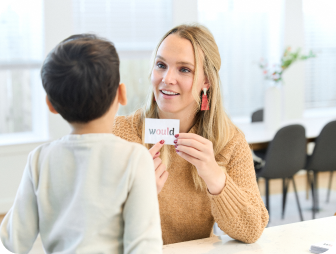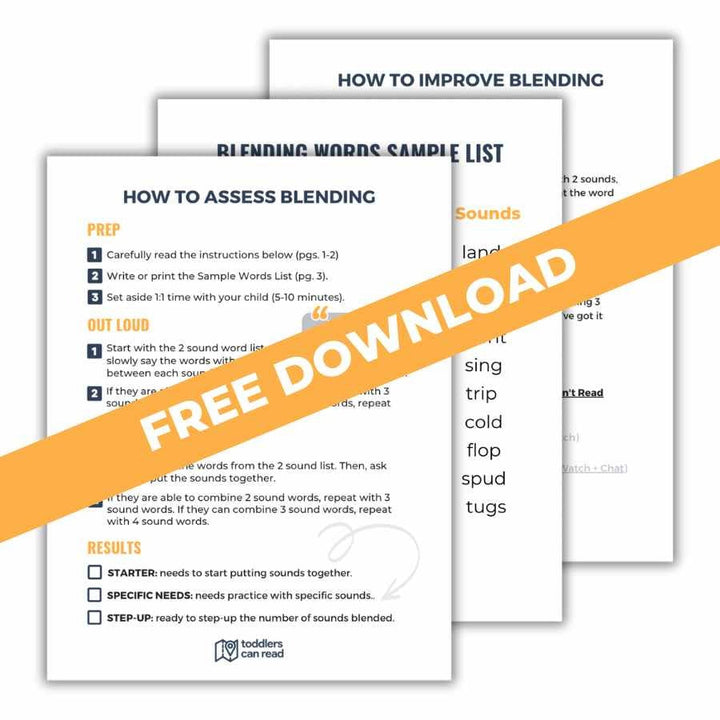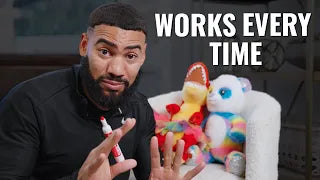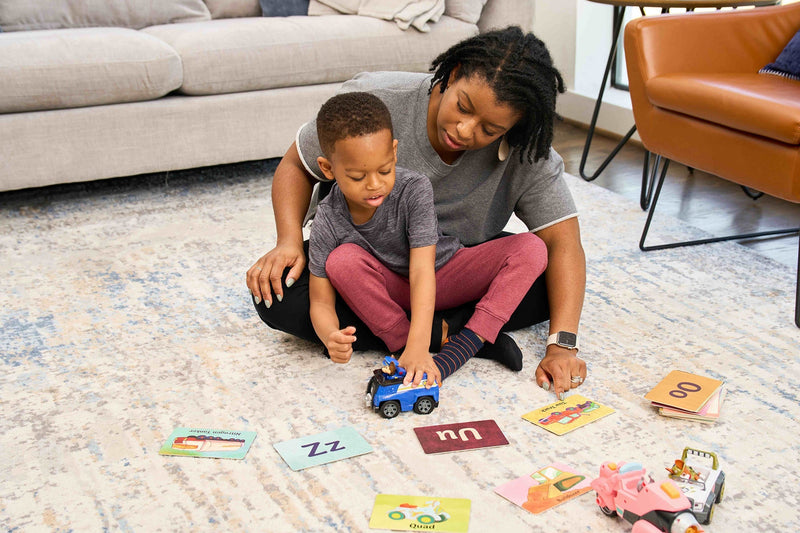I'm not going to bury the lede here: TCR sells flashcards. And we spent a lot of time and energy designing them to make sure they would be the best on the market.
But that's not what this blog post is going to be about.
I've been an educator for the last 10 years and a parent for 4 years. I understand how overwhelming it can be to figure out what learning supplies to buy for your little one.
And that's because there are so many different choices. For example, if you're looking to buy phonics flashcards, you would find 100 different options with a quick Google search.
But not all flashcards are created equal. And in this post, I'm going to share with you the top 6 things to look for when making your purchase so you don't waste your money on something that won't be helpful.
One Note Before Getting Started
If my cards are out of your price range, or you decide you like another set better- that's okay! The most important thing to understand is that what you buy is much less important than how you use it.
So even if you make your own with index cards and markers, as long as you know what you're doing, your child will learn faster than if you buy expensive materials and then teach them the wrong way.
What to Look for in Flashcards
If you decide to invest in phonics cards for your little one (or make your own), it's important to know what to look for. Here's a few things to think about when making your choice:
1. Are The Letters Big Enough?This one is simple. If your child can't see the letters, they will not be able to learn their sounds. Make sure the cards have letters that are big enough for little eyes.
When it's time for your little one to practice writing the letters, bigger letters will also be easier for them to trace. The fine motor skills needed to write their name typically don't develop until they're around 4-5 years old, so tracing small letters will make it more difficult for them.
2. Are They Toddler Proof?When my son was learning his letter sounds, he was still at the stage where he wanted to put everything in his mouth.
Maybe your child is different, but I knew that if my cards weren't sturdy, there was a good chance they would get eaten or torn up.
Having sturdy cards has another advantage: It's easier to play games or do fun activities when you don't have to worry about the cards being destroyed. You can do things like throwing, slapping, or jumping on the card if it holds up well.

You might be thinking to yourself, "Why does that matter? Kids like pictures!"
And that's true; kids do like the pictures! But suppose a kid sees an apple every time they practice the /a/ sound. In that case, they may connect the letter 'a' to the picture of an apple instead of the actual sound.
I hear this from parents ALL the time, frustrated because their little one has to relearn the letter sounds without relying on a picture.
Watch this explanation for more on why I decided to include pictures on the BACK of my flashcards.
4. Does the Picture Reinforce the Correct (Primary) Sound?This one is straightforward; just because a word starts with a letter doesn't mean it begins with the primary sound.
If you're trying to teach the short /e/ sound, you'll probably want the letter card to have a picture of an elephant versus an emu. An image that doesn't focus on the letter's primary sound will only confuse your little one.
5. Are the Upper and Lowercase Letter Shown Together?"But isn't it going to confuse them to learn both letters at once?"
The short answer is no.
And the long answer involves complicated cognitive science that can best be explained by scientists that have studied this process of learning through "chunking" in depth.
Essentially, chunking information helps our brains remember things more easily; that's why we learn our phone numbers in 3 chunks instead of 10 individual numbers.
The same thing applies to our little ones learning their letter sounds. So why spend the time to teach them 52 letters when we could just as easily teach them 26 (in chunks of 2)?
(Bonus) Do The Pictures Capture Their Attention?This is definitely the least important thing to look for when looking at letter flashcards. And if you decide to make your own cards, not having beautiful illustrations isn't going to stand in the way of your child learning their letter sounds.
But, like I said earlier, kids like pictures. And that's exactly why I included them on (the back of) mine.
If you find a set with pictures of your little one's interests, you can have them look at, play with, or talk about the picture after they identify the sound. And they'll love it.
How Do Toddlers CAN Read Sound Cards Stack Up?
Now that you have an idea of what to look for in a set of flashcards, here's why I think TCR's are the best.
Our flashcards are:
- Toddler-Sized: Each card is big enough to read from a distance but small enough for your little one to hold comfortably (4x6").
- Toddler-Proof: These cards are sturdier than many board books and well-coated for a smooth (and toddler-resistant) finish.
- Based In Phonics: Unlike most sound cards for children, these feature images that include each letter's most common sound.
- Beautifully Illustrated: Each set of cards features beautiful, custom illustrations based on common toddler interests. And (more importantly), the pictures are on the back of the cards, so your little one won't rely on a picture to remember the letter sound or name.

Note: These cards were illustrated by Casey Jane Satterlund at Little Sprig Stories. She's the most unique illustrator I could find on Instagram and has several custom jobs and cool projects on her website.
And if you're interested in how our cards compare to others on the market:

If you do decide to purchase our letter flashcards, you can buy any of the four sets on our website.
(Side note: if you want to help your little one learn their letter sounds but aren't sure which ones they do and don't know, check out my blog post on How to Assess the Letter Sounds.)
Even If You DON'T Buy My Sound Cards...
I said it at the beginning of this blog, and I will say it again now: Knowing how to teach your child how to read will always be more important than the materials you use to teach them.
You could buy the nicest, most expensive reading materials money can buy. Still, if you don't know how to teach reading, there's a 0% chance that any of those materials will make a difference when it comes time for your little one to actually start learning.
Because things don't teach kids how to read—people do.
And if you're not sure how to teach your child, I'm here to support you; I have a Learning Sounds course that will give you a step-by-step guide on how to teach your little one their basic letter sounds.
Remember, no matter what you do or don't buy: your little one CAN learn how to read, you CAN teach them, and I'll be here to support you along the way.









